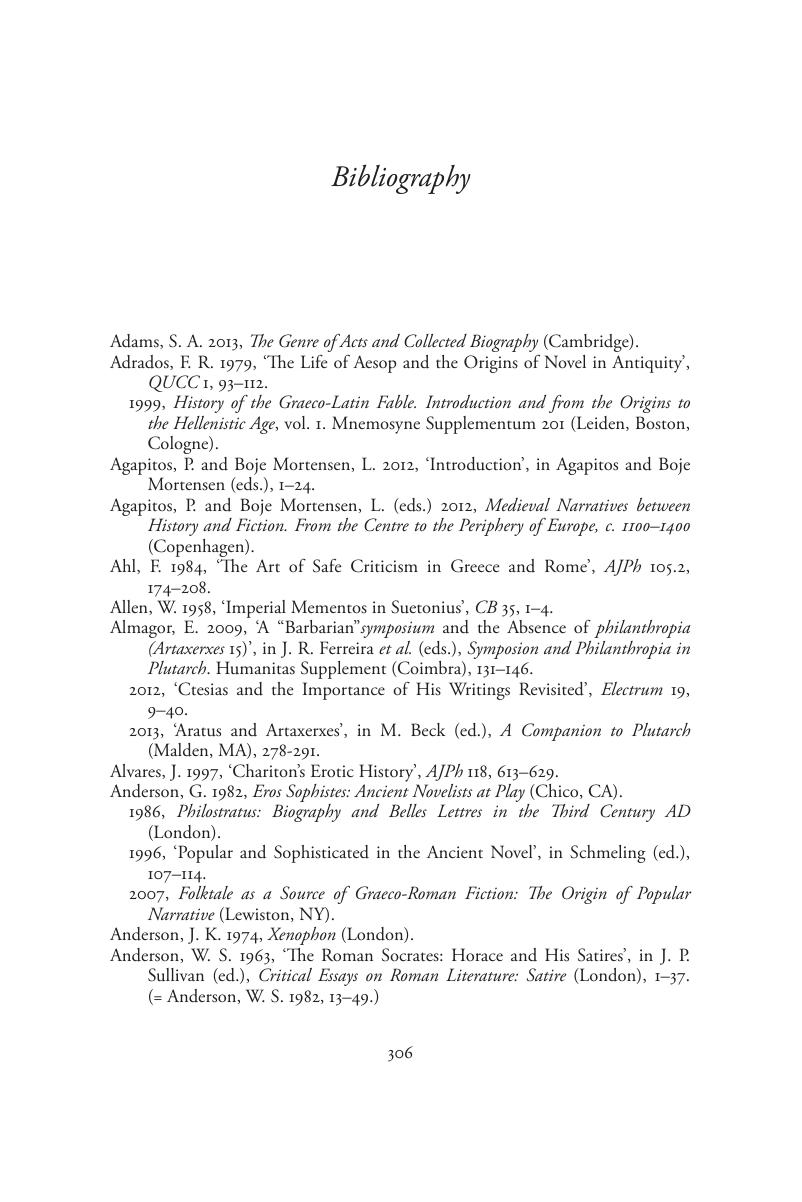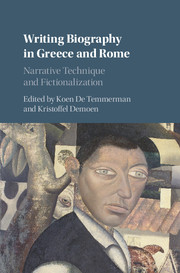Book contents
- Writing Biography in Greece and Rome
- Writing Biography in Greece and Rome
- Copyright page
- Contents
- Notes on contributors
- Preface
- Part I Ancient biography revisited
- Part II Individual biographies
- Part III Collective biographies
- Part IV Biographical modes of discourse
- Bibliography
- General index
- Index locorum
- References
Bibliography
Published online by Cambridge University Press: 05 June 2016
- Writing Biography in Greece and Rome
- Writing Biography in Greece and Rome
- Copyright page
- Contents
- Notes on contributors
- Preface
- Part I Ancient biography revisited
- Part II Individual biographies
- Part III Collective biographies
- Part IV Biographical modes of discourse
- Bibliography
- General index
- Index locorum
- References
Summary

- Type
- Chapter
- Information
- Writing Biography in Greece and RomeNarrative Technique and Fictionalization, pp. 306 - 342Publisher: Cambridge University PressPrint publication year: 2016



